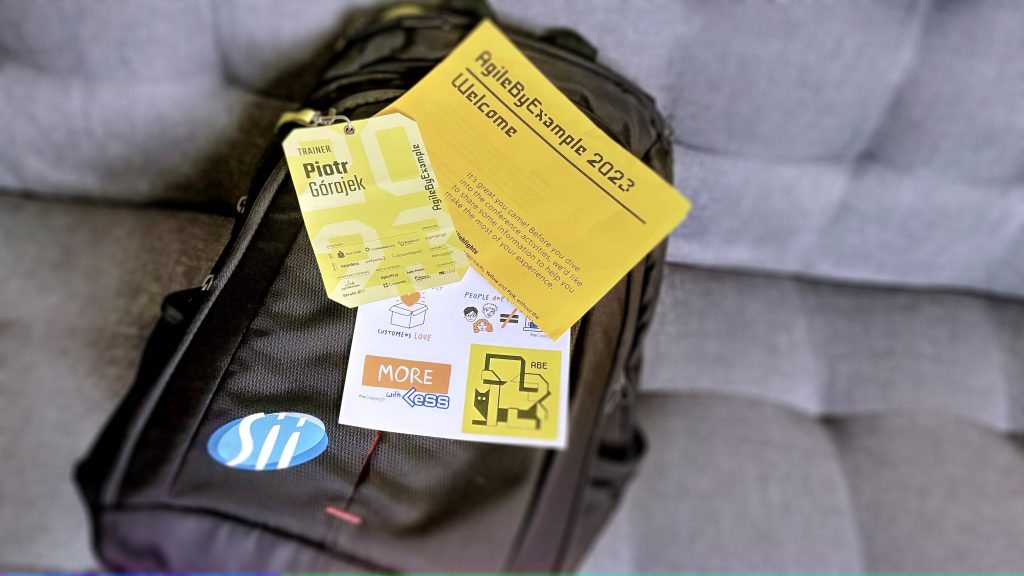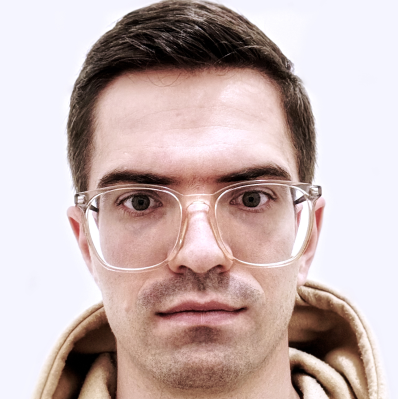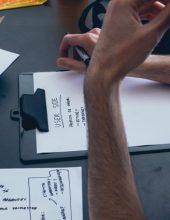In our native (Polish) Agile community, various regular events are organized that are worth participating in when possible. One of them is Agile By Example. This year, among other things, there was a lot of talk about Agile transformations, cooperating with leaders, and what to measure.
It is impossible to fully convey the topics and information that come up during the presentations. Fortunately, they are recorded, and in a few months, anyone interested will be able to watch them on the ABE channel on YouTube. Today, I wanted to share with you a brief overview of the presentations I had the opportunity to listen to 🙂

After the morning coffee
The New Agile Economics
The series of lectures began with a presentation by Dan Vacanti. In his “The New Agile Economics” lecture, Dan shared a few interesting observations:
- Since the cheap money available over the past 10 years was coming to an end, the Agile approach is undergoing a trial of time.
- Timeboxes, planning, and prioritizing topics are often just a waste.
If we want to improve our processes, we need to learn how to separate “potential signal” from “probable noise”.
This last point stuck with me the most. Although Dan’s example was highly simplified, this fragment resonated with me the most. How often do we fall into the trap of making decisions based on data that is just noise? Can we identify which of the observed information is actually a signal to take real action? Although during the presentation we did not go into details on how to calculate/define the boundaries, it is worth remembering the name Dr. Walter Shewhart as the author of this concept for further exploration of the topic.
Talks
The next presentations were firmly rooted in the theme of agile transformations. Of the five presentations conducted more or less in parallel, I managed to listen to three:
- In their presentation, Maciej Stępnikowski and Kacper Nowosadzki talked about the practical application of systems thinking – how it helped them engage the management team in the change process, and define the hypothesis and measure of success. It was a great reminder of why thinking systems is one of the most important tools for any Scrum Master, Agile Coach, or simply “change agent”.
- On the other hand, Tomasz Wilk discussed his perspective on Team Topologies. The most important idea that resonated with me was his emphasis on the fact that many people try to use Team Topologies as a framework for implementation, while it is only intended as a “common language” to help describe the structure in which we work in and how we collaborate within it, with Conway’s law as a prism.
- Konrad Grzegory and Mateusz Gajdzik discussed the agile transformation at CD Projekt Red. The most interesting things for me in the entire presentation were three key points worth remembering:
- the lack of one “scaled” framework and discovering their own approach,
- the “Always working game” principle as the cornerstone of the entire approach,
- the complexity of the environment they operate in – in such a “classic” IT, several specializations work on product development, while dozens (or more) specializations can easily work on a game.
After lunch
I spent the second part of the day with Rob Cooper, who held a workshop on influence without authority. It was one of the highlights of the day for me, and although we only touched the tip of the iceberg on this topic, three main thoughts stayed with me:
- Work on your own narrative as well as the narrative of change, this helps with the next point.
- Build relationships with others and look for allies.
- Be patient – influence without authority develops over time, sometimes even years.
I liked how Rob put into practice what he talked about during the workshop. In broad strokes, Rob started with a personal story, which, on the one hand, was authentic and, on the other, universal enough that he quickly established a friendly rapport with the IT-heavy audience. He then smoothly transitioned to a narrative based on the story of William Wilberforce and his fight to abolish slavery in the British Empire. It took him, along with other supporters, over twenty years to exert influence on this issue. Rob adeptly moved between these two narratives, sharing various tips along the way on how to work on them.
Discussion Panel
Before the last lecture, there was also a discussion panel with four key speakers. The discussion centered around the future of Agile, or remote work in general, and the current trend of returning to offices. However, the remark from Joe Justice about Toyota resonated with me the most.
During the discussion, participants considered various financial, economic, and business situations that could impact the changes being observed. Joe, however, drew attention to the aspect of short-term vs long-term thinking and referred to his current engagement with the Japanese company. Their current long-term goal, or even vision through which all decisions are filtered, is the statement:
“To be a company that society does not want to lose.”
Although on Toyota’s websites, this theme is framed slightly differently, the sentiment in these materials and Joe’s statement is consistent.
The idea that really resonated with me was that when they consider any decision now, they ask themselves questions like:
“If we do X, will society treat us more as an integral and important part of the organism/environment for its positive development?”
The last presentation of the day
The day ended with a presentation by Pete Behrens in which the main focus was organizational change and how to engage decision-makers in it. Pete highlighted three aspects in this regard:
- Most agile frameworks focus on delivery, forgetting about agile values (courage, commitment, openness, focus, and respect).
- Lasting change requires nurturing those agile values, a growth mindset, and habits that support change (catalyst habits).
- If you are responsible for the change aspect, be aware that teams and “management” often play different games, speak different languages, etc. The key is how we communicate with different areas of the organization to help each side “cross the line” and collaborate (play the same game).
Pete also used an interesting analogy to a 5-star restaurant, which does not recreate recipes for dishes but creates its own. He mentioned this in the context of blindly following agile frameworks.
Second day
On this day, I was more focused on conversations with various participants and general “networking”., Hhowever, both the opening and closing lectures of the day were very inspiring.
If you go back to the office, don’t go backwards in time
The second day began with a presentation by Lisette Sutherland, who focused on the topic of work organization and its future in the context of remote work before the pandemic, during it, and the current trend of returning to offices. Lisette shared various practices supporting effective remote work (you can also read about such practices in our blog article).
However, what resonated with me the most was her statement, which also served as the title of Lisette’s presentation:
“When we do return to offices, let it not be a journey back in time”.
The point here is to use our experiences and create a new work model, instead of reverting to pre-pandemic habits and approaches.
SpaceX Agile by Example
The whole ABE event concluded with a presentation by Joe Justice. Joe is a treasure trove of interesting examples related to Tesla and SpaceX, and one of his key points in the presentation revolved around the role of modules and components in a product and their impact on the speed of development and delivery. The good news for all readers is that Joe has been refining his presentation for some time now, and you can find different versions of it on YouTube.
Is it worth participating in ABE?
In short – yes.
The longer answer is, of course, “it depends”, for example, how active you are in the agile community? If you are very active, there is a good chance that you will already know most of the presentations to some extent. In such situation, I encourage you to submit your application either as a speaker or as a trainer to run your own workshop as part of the Dojo, which takes place on the first day of ABE.
Of course, not every applicant will get a chance as the number of available slots is limited, but if you do succeed, you will get an additional bonus in the form of going out to dinner with the speakers. It is a unique opportunity to talk to various people, often known in the agile world, such as Joe Justice.
Another significant value of ABE is that the conference brings together people not only from our backyard – the organizers always try to bring in interesting people from abroad as well.
In summary, I can wholeheartedly recommend that everyone attend such a conference at least once 🙂
















Leave a comment